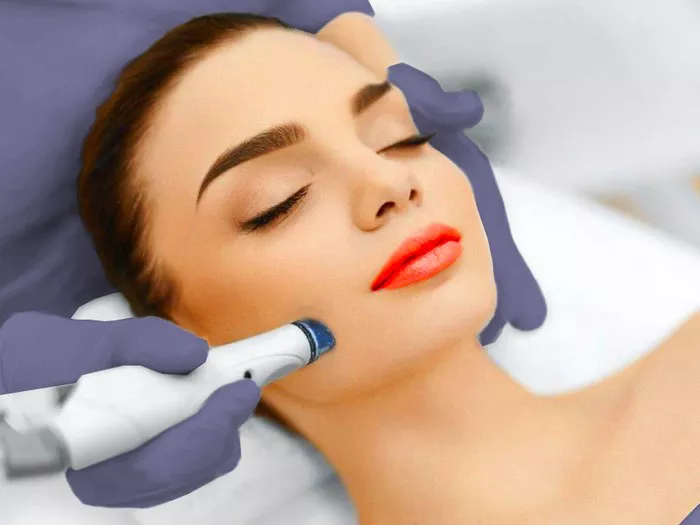Microdermabrasion is a popular cosmetic procedure that offers a range of benefits for the skin. This non-invasive treatment is designed to exfoliate and rejuvenate the skin, improving its texture, tone, and overall appearance. In this article, we delve into the details of what microdermabrasion does for your skin, outlining its benefits, the procedure itself, and what to expect during and after treatment.
What Is Microdermabrasion?
Microdermabrasion is a mechanical exfoliation technique that uses a specialized device to gently remove the outermost layer of dead skin cells from the surface of the skin. This process helps to stimulate cell turnover, enhance collagen production, and reveal fresher, smoother skin underneath.
The procedure is typically performed by a skincare professional and can be customized to address specific skin concerns, such as fine lines, wrinkles, hyperpigmentation, acne scars, and uneven skin tone. It is suitable for most skin types and can be performed on various areas of the body, including the face, neck, chest, and hands.
The Benefits of Microdermabrasion
Exfoliation and Skin Renewal
Microdermabrasion effectively exfoliates the outer layer of dead skin cells, allowing new, healthy skin cells to surface. This process helps to reveal a brighter, smoother complexion and promotes a more youthful appearance.
Improvement in Skin Texture
By removing the outermost layer of dead skin cells, microdermabrasion helps to smooth rough skin texture, reducing the appearance of fine lines, wrinkles, and acne scars. It can also minimize the size of enlarged pores and improve overall skin tone and clarity.
Stimulation of Collagen Production
Microdermabrasion stimulates collagen production in the deeper layers of the skin. Collagen is a protein that provides structural support to the skin, helping to maintain its firmness and elasticity. Increased collagen production can lead to a more youthful and plump complexion.
Enhanced Product Absorption
Following microdermabrasion, the skin is better able to absorb skincare products, such as serums and moisturizers. This allows for more effective delivery of active ingredients, maximizing their benefits and enhancing overall skincare results.
Reduction of Hyperpigmentation
Microdermabrasion can help improve the appearance of hyperpigmentation, including age spots, sunspots, and melasma. By gently exfoliating the outer layers of the skin, it encourages the fading of these dark spots and promotes a more even skin tone.
Non-Invasive and Minimal Downtime
One of the significant advantages of microdermabrasion is that it is a non-invasive procedure that requires little to no downtime. Unlike more aggressive skin resurfacing treatments, such as chemical peels or laser therapy, microdermabrasion offers a gentle and safe option for skin rejuvenation.
The Microdermabrasion Procedure
The microdermabrasion procedure typically involves the following steps:
Cleansing: The skincare professional cleanses the skin to remove any makeup, oil, or impurities, ensuring a clean surface for treatment.
Application of Microdermabrasion Device: The professional uses a handheld device that emits fine crystals or a diamond-tipped wand to exfoliate the skin gently. The device is moved across the skin in a controlled manner, targeting the desired areas.
Suction and Exfoliation: As the device exfoliates the skin, it also creates suction to remove the dead skin cells and crystals or debris from the treatment area.
Moisturizer and Sunscreen Application: After the microdermabrasion treatment, a soothing moisturizer and sunscreen are applied to protect and hydrate the newly exposed skin.
The procedure is generally well-tolerated, with minimal discomfort reported by most individuals. The duration of the treatment can vary, depending on the areas being treated and the specific concerns addressed.
Post-Treatment Care
After microdermabrasion, it is essential to follow specific post-treatment care instructions to optimize the results and minimize any potential side effects. These may include:
Sun Protection: The treated skin may be more sensitive to the sun, so it is crucial to apply a broad-spectrum sunscreen with a high SPF and avoid direct sun exposure for a few days after the treatment.
Avoiding Harsh Products: It is advisable to avoid using harsh or abrasive skincare products, such as scrubs or exfoliants, for a few days following the procedure to allow the skin to heal.
Hydration: Keeping the skin well-hydrated is essential to promote healing and maintain its overall health. Use gentle, hydrating skincare products and drink plenty of water to support skin hydration from within.
Avoiding Heavy Makeup: It is recommended to avoid heavy makeup and opt for lightweight, non-comedogenic products that allow the skin to breathe and heal naturally.
Frequency and Maintenance
The frequency of microdermabrasion treatments depends on several factors, including the individual’s skincare goals, the condition of their skin, and the recommendations of their skincare professional. Generally, a series of treatments is recommended initially, spaced a few weeks apart, to achieve optimal results.
After the initial series, maintenance treatments may be performed every one to three months to sustain the benefits and keep the skin looking fresh and rejuvenated.
Conclusion
Microdermabrasion is a versatile and effective procedure that offers numerous benefits for the skin. From exfoliating and renewing the skin’s surface to improving texture, tone, and collagen production, microdermabrasion can help you achieve a smoother, more youthful complexion.
By consulting with a qualified skincare professional and following proper post-treatment care, you can harness the power of microdermabrasion to revitalize your skin and unlock its natural radiance. So, why wait? Discover the transformative effects of microdermabrasion and enjoy a refreshed and rejuvenated appearance.


